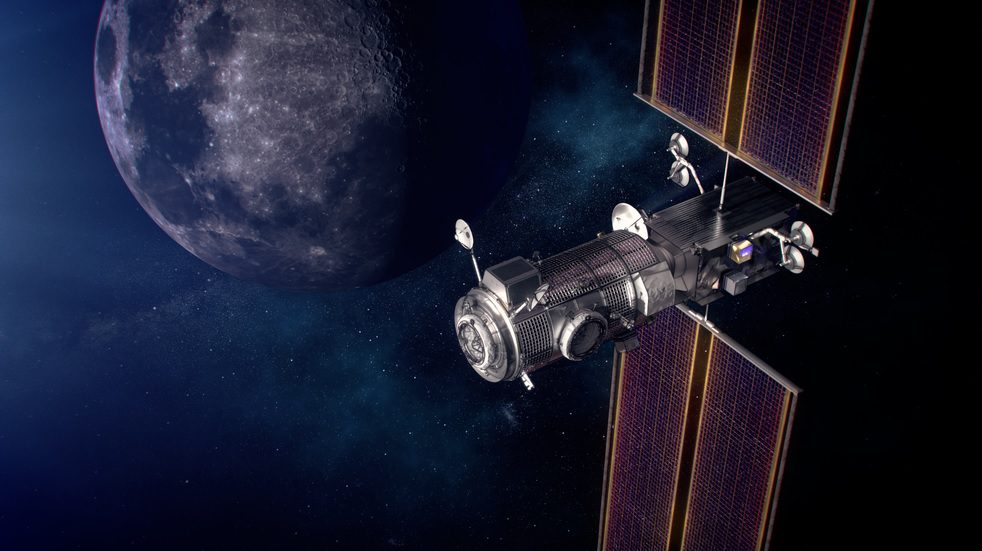NASA has selected the SpaceX Falcon Heavy rocket to provide launch services for the agency’s Power and Propulsion Element (PPE) and Habitation and Logistics Outpost (HALO), the foundation elements of the Lunar space station dubbed Gateway.
After integration on Earth, the PPE and HALO are targeted to launch together no earlier than May 2024 on a Falcon Heavy from Launch Complex 39A at NASA’s Kennedy Space Center in Florida. The total cost to NASA is approximately US$331.8 million, including the launch service and other mission-related costs.
The PPE is a 60-kilowatt class solar electric propulsion spacecraft that also will provide power, high-speed communications, attitude control and the capability to move the Gateway to different lunar orbits, providing more access to the Moon’s surface than ever before.
The HALO is the pressurised living quarters where astronauts who visit the Gateway, often on their way to the Moon, will work. It will provide command and control functionality and serve as the docking hub for the outpost. The HALO will support science investigations, distribute power, provide communications for visiting vehicles and lunar surface expeditions, and supplement the life-support systems aboard the crew-carrying Project Artemis Orion spacecraft.
About one-sixth the size of the International Space Station, the Lunar Gateway will function as a way station in a high lunar near-rectilinear halo orbit. It will serve as a rendezvous point for Artemis astronauts traveling to lunar orbit aboard Orion prior to transiting to low-lunar orbit and the surface of the Moon. From this vantage, NASA and its international and commercial partners will conduct unprecedented deep space science and technology investigations.
NASA’s Launch Services Program at Kennedy will manage the SpaceX launch service. The HALO is being designed and built by Northrop Grumman Space Systems of Dulles, Virginia, and the PPE is being built by Maxar Technologies of Westminster, Colorado. NASA’s Johnson Space Center in Houston manages the Gateway program for the agency. NASA’s Glenn Research Center in Cleveland is responsible for management of the PPE.
Post Script: In February, NASA received approval to switch the unmanned Europa Clipper mission to Jupiter’s moon Europa from its originally planned (but not booked) SLS launch to a commercial launch vehicle after significant compatibility issues were discovered between the payload and rocket. At this time, the SpaceX Falcon Heavy rocket is believed to be the leading contender for the launch.









